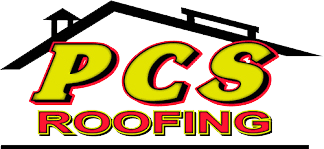Roof & Attic Insulation Pros & Cons

What are the forms of insulation in Attic?
You are after the right isolation attic? The best way to insulate an attic is not the most cost-effective way. This response depends on the concept of “better.” But you definitely know that too.
Let’s first speak about the most popular forms of attics insulation: fiberglass batts, cellulose, fiberglass loses, and foam spray. There are other possibilities, but the bulk of the facilities provide these products. When using the word “R-value” below, this refers to the potential of the material to withstand heat transfer. The larger the percentage, the greater.
Insulation Rolls
Insulation rolls consist of materials such as fibreglass, acrylic filaments and natural fibres that are rolled into dense sheets together and also have humidity preventing or flame-resistant covering on each side. This method of insulation performs well enough for incomplete attics, ceilings and walls, but has a very low R-value and room.

Fiberglass rollers are small, simple to use, and therefore the right choice for homeowners who would like to install themselves. But be careful: once they come into contact with the skin, fibers can be irritating, and you can raise the chance of cancer by inhaling the fibers. If installing your own installation, please wear a face mask and protective clothing.
Attic insulation pros and cons Fiberglass Batt
Fiberglass batts have the most comfortable way to insulate the attic or just anywhere in your house. But batts usually deliver the very worst output of isolation for just about any task. However, it takes very little time to catch a package and roll it in the shop to use it sometimes.
The following photo depicts an atrocious installation in a two-year-old house. The house was in the heart of a neighborhood of Twin Cities, a suburb of an inner loop. Oh, the city survey went.
Mineral Wool
The insulation of rock wool (also referred to as slag wool) can also be used for DIY, partially because these bat forms have a very strong shape. Some other appealing aspect is that rock wool batts are generally – and often mainly – made out of recycled material, aside from their fire-retardant qualities.
Loose-Fill and Blown-In Insulation
This is an insulation type composed of small fiber, foam, and other material particles. The walls, floors, attics, and crawl areas can then be used without much interference. It is indeed blown onto spaces.
Pro: It is eco-friendly and made with recycled products. Cellulose through recycled copy paper; fiberglass, 20 to 30% recycled glass; and mineral fur, typically extracted from 75% post-industrial recycled contents, may be used.
Con: You must fully seal air and add soffit ventilation if necessary. First, you would have to trim and restructure poorly laid bats and insulate piping if you blast cellulose over existing fiberglass. If blown-in isolation is in touch with a lot of humidity for a long time, mold and rot can respond, and it is necessary to ensure that the area is clean and dry before blowing.
SPRAY FOAM ATTIC INSULATION

When comparing the benefits of spray foam attic insulation with those of the adverse ones, note that perhaps the stuff is usable as a polyurethane spray open or in-cell. There are many considerable variations here between the two, but they share the same.
Pros:
1. The high R values of both foams.
2. Foam separation dries hard and provides a strong air barrier.
3. The substance occupies small gaps that are impossible to access.
4. Installer can also do the attic walls.
Cons:
1. Spray foams are also more costly than that of most forms of insulation.
2. Skilled implementation is required for both open and closed cell sprays.
3. Additives can raise Installer health threats in chemical spray foam.
Bottom Line of Roof & Attic Insulation Pros & Cons:
When it takes to roof separation, no ‘one size suits all’ because each type has its benefit and disadvantage, whenever it takes to roof insulation styles, it has been the most cost-effective in the future, given it is installed properly. This form of insulation will help to remove humidity and condensation problems that will affect your house in the future, and your home will still be more warm and relaxed for the wintertime.
Blog article written by: SEO After Coffee for P.C.S. Roofing Nov 2020
